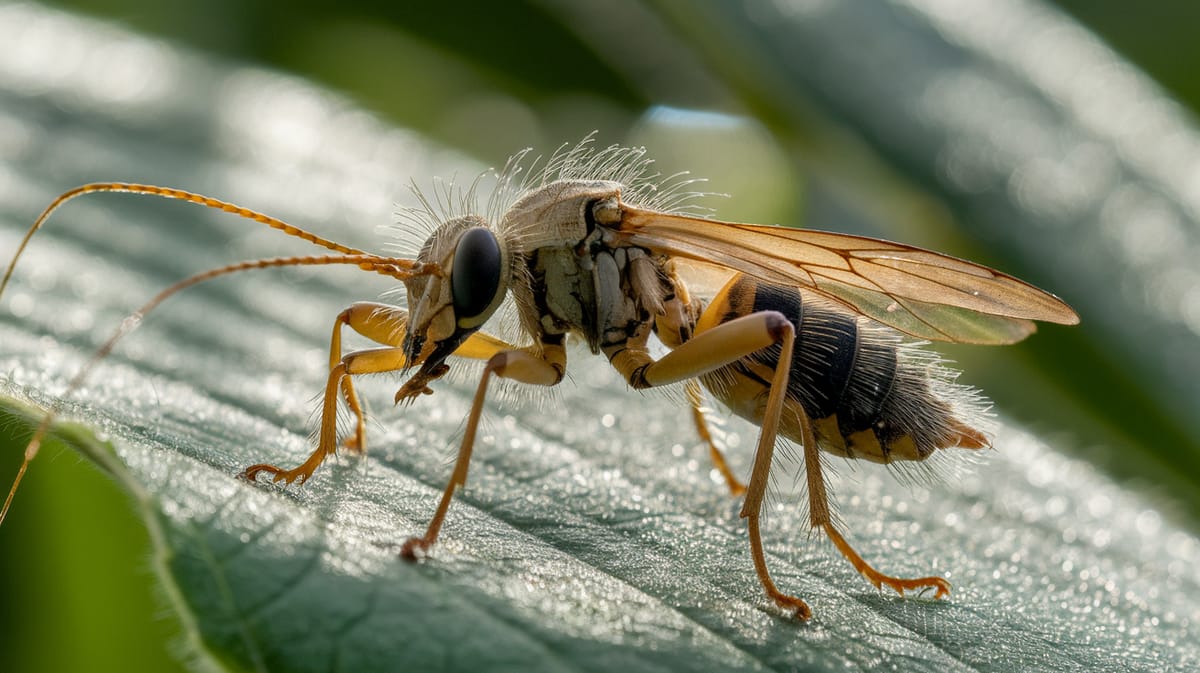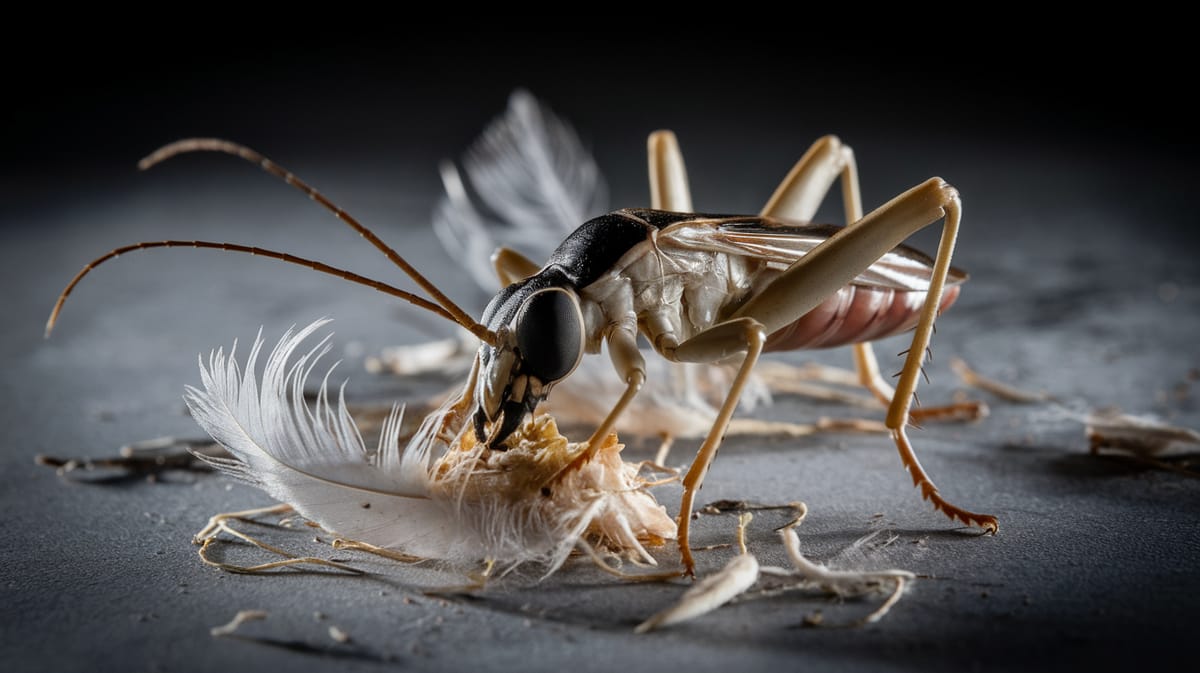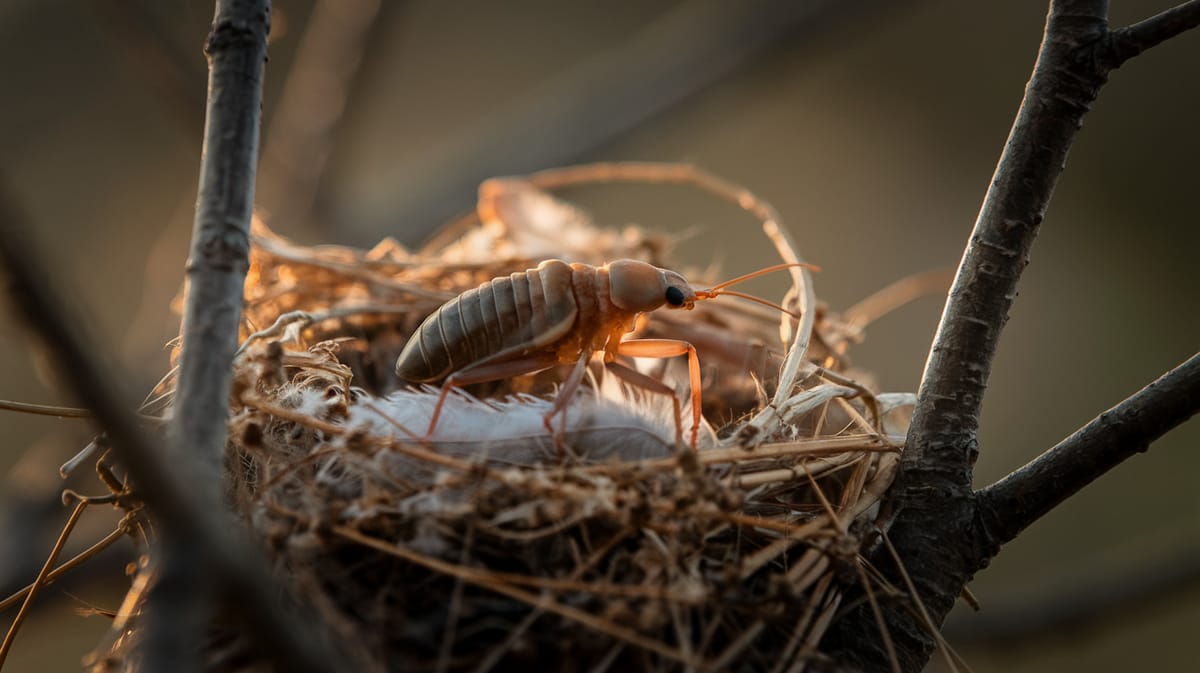Mallophaga
Masters of disguise, Mallophaga are tiny, wingless insects that thrive on feathers and fur, playing a crucial role in controlling host populations and promoting healthy ecosystems. Their chewing mouthparts make them efficient at breaking down organic matter, contributing to nutrient cycling and environmental balance.

Key Insights at a Glance
Did You Know?
Taxonomy & Classification
Mallophaga are wingless parasitic insects, specially adapted for life on birds and mammals, with biting mouthparts ideal for feeding on skin and feathers. Let's understand the evolutionary journey and classification of these remarkable parasites.
Global Presence
Mallophaga includes over 4,000 species distributed globally, thriving in diverse ecosystems by exploiting various avian and mammalian hosts.
Evolutionary Adaptations
Originating in the Cretaceous period, Mallophaga have evolved specialized adaptations to survive alongside their hosts through significant ecological changes.
Lifecycle and Growth
A remarkable journey of transformation from Egg to Adult.
Egg
Laid near the base of feathers or hair, eggs adhere firmly, providing a secure environment for embryo development.
Nymph
Nymphs resemble smaller adults, lacking wings, and feed on skin debris while undergoing several molts to grow.
Adult
Adults are fully equipped to reproduce and continue the lifecycle, feeding on feathers, hair, or skin debris.
Dietary Habits
A specialized ectoparasite, this insect primarily feeds on feathers, skin flakes, and hair from various host animals.
| DIET TYPE | DESCRIPTION |
|---|---|
| Primary Diet | Mainly consumes feathers and skin debris from birds and mammals, using mandibles to break down keratin. |
| Secondary Diet | Occasionally ingests skin oils and secretions from its hosts, supplementing its nutritional intake. |
| Occasional | Opportunistically feeds on blood from wounds or damaged skin, though not a primary aspect of its diet. |

Behaviour and Adaptations
Discover the fascinating adaptations that enable Mallophaga to thrive as specialized ectoparasites.
Chewing Mouthparts
Adapted for feeding on feathers, hair, and skin debris.
Host Attachment
Claw-like structures ensure firm grip on hosts.
Rapid Reproduction
High reproductive rate sustains populations despite challenges.
Ecosystem Impact
Mallophaga lice play a vital role in maintaining ecological balance.
Natural Decomposer
Breaks down organic matter, aiding nutrient cycling in ecosystems.
Food Source
Serves as prey for birds and small mammals, supporting biodiversity.
Parasitic Population Control
Regulates host populations, preventing overpopulation of certain animals.
Conservation Challenges
Understanding and addressing the major threats to Mallophaga populations.
Habitat Destruction
Deforestation and agriculture reduce available habitats for Mallophaga.
Pesticide Use
Pesticides in farming harm Mallophaga populations significantly.
Climate Change
Temperature shifts disrupt Mallophaga's life cycle and habitats.
Frequently Asked Questions
How long do Mallophaga live?
Mallophaga, commonly known as chewing lice, typically live for about one month. Their life cycle includes egg, nymph, and adult stages. Each stage contributes to their overall lifespan, focusing on survival and reproduction on their host, mainly birds or mammals.
What do Mallophaga eat?
Mallophaga primarily feed on skin debris, feathers, fur, and sometimes blood from their host animals. They use their chewing mouthparts to consume these materials, which can cause irritation and damage to the host if infestations are severe.
Are Mallophaga poisonous?
Mallophaga are not poisonous. They are ectoparasites that can cause discomfort and irritation to their hosts but do not have venom or toxins. Their impact is mainly due to their feeding habits and the potential for transmitting other parasites.
Are Mallophaga endangered?
Mallophaga are not considered endangered. They are widespread and occur on various host species worldwide. Their populations are typically stable due to their close association with common bird and mammal hosts.
What do Mallophaga symbolize?
Mallophaga do not have a widely recognized symbolic meaning. However, in some contexts, they could represent parasitism, persistence, or the impact of small creatures on larger systems, as their presence can significantly affect the health of their hosts.
Do Mallophaga bite?
Mallophaga do not bite in the way that insects like mosquitoes do. They use their chewing mouthparts to feed on skin debris and feathers. While their feeding can cause irritation, they do not bite to draw blood from their hosts.
What color are Mallophaga?
Mallophaga are generally pale or yellowish in color, which helps them blend in with the feathers or fur of their hosts. This coloration varies slightly among different species, but they tend to be light-colored to avoid detection.
Does a Mallophaga have wings?
Mallophaga do not have wings. They are wingless insects that have adapted to live closely on their hosts. Their flattened bodies and strong legs help them navigate through feathers or fur efficiently.
What does a Mallophaga look like?
Mallophaga are small, wingless insects with flattened bodies. They have strong chewing mouthparts, short antennae, and claws on their legs to cling to their host. Their appearance is adapted to their parasitic lifestyle, allowing them to move through feathers or fur easily.
Is a Mallophaga an insect?
Yes, Mallophaga are insects. They belong to the order Phthiraptera, which includes lice. As insects, they have three main body parts: the head, thorax, and abdomen, along with six legs, all of which are adapted for their parasitic way of life.
Related Insects
Discover insects with similar characteristics to Mallophaga - including shared habitats, diets, and taxonomic classifications
Share this profile
Help others discover Mallophaga
